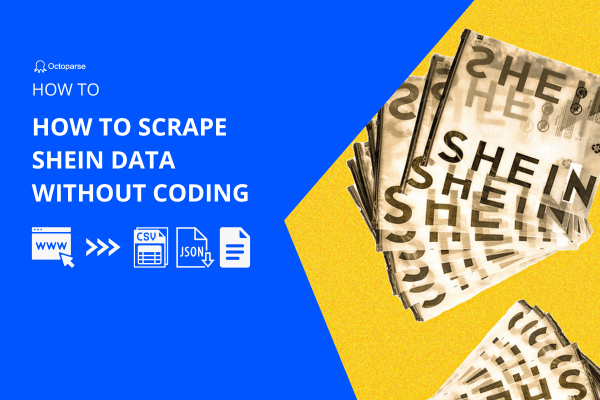
Understanding the Digital Fashion Landscape
In the rapidly evolving world of digital commerce, Shein has emerged as a transformative force, revolutionizing how we perceive online fashion retail. As a global platform processing over 600,000 active products simultaneously and releasing approximately 300,000 new items annually, Shein represents a goldmine of data for researchers, marketers, and entrepreneurs.
The Data Revolution in E-Commerce
Web scraping has become an essential skill for professionals seeking to understand complex digital ecosystems. With Shein‘s massive user base of 88.8 million global customers, extracting meaningful insights requires sophisticated techniques and a strategic approach.
Technical Foundations of Web Scraping
Preparing Your Digital Toolkit
Before diving into Shein data extraction, you‘ll need a robust technical infrastructure. Professional web scrapers typically rely on a combination of programming languages, libraries, and specialized tools to navigate complex digital landscapes.
Essential Technologies
- Python (primary language)
- BeautifulSoup
- Selenium WebDriver
- Requests library
- Pandas for data manipulation
Understanding Web Structure and Dynamics
Shein‘s website employs advanced JavaScript rendering and dynamic content loading, which means traditional scraping methods won‘t suffice. Modern extraction requires sophisticated techniques that can simulate human-like browsing behavior and handle complex DOM structures.
Comprehensive Extraction Methodologies
Approach 1: Python-Powered Scraping
import requests
from bs4 import BeautifulSoup
import pandas as pd
class SheinScraper:
def __init__(self, base_url):
self.base_url = base_url
self.headers = {
‘User-Agent‘: ‘Advanced Web Research Tool‘
}
def extract_product_data(self, category):
response = requests.get(f"{self.base_url}/{category}", headers=self.headers)
soup = BeautifulSoup(response.content, ‘html.parser‘)
# Advanced extraction logic
products = []
for product in soup.find_all(‘div‘, class_=‘product-container‘):
product_details = {
‘name‘: product.find(‘h3‘).text,
‘price‘: product.find(‘span‘, class_=‘price‘).text,
‘url‘: product.find(‘a‘)[‘href‘]
}
products.append(product_details)
return pd.DataFrame(products)Approach 2: Selenium WebDriver Technique
Selenium offers more robust interaction with dynamically loaded websites. By simulating actual browser behavior, you can extract data that might be invisible to traditional scraping methods.
from selenium import webdriver
from selenium.webdriver.common.by import By
from selenium.webdriver.support.ui import WebDriverWait
from selenium.webdriver.support import expected_conditions as EC
class AdvancedSheinScraper:
def __init__(self):
self.driver = webdriver.Chrome()
def navigate_and_extract(self, url):
self.driver.get(url)
# Wait for dynamic content
WebDriverWait(self.driver, 10).until(
EC.presence_of_element_located((By.CLASS_NAME, ‘product-grid‘))
)
# Extract complex data structures
products = self.driver.find_elements(By.CLASS_NAME, ‘product-item‘)
return [product.get_attribute(‘innerHTML‘) for product in products]Ethical Considerations and Best Practices
Legal and Ethical Framework
Web scraping exists in a nuanced legal landscape. While data extraction offers immense value, professionals must navigate potential ethical and legal challenges:
- Respect robots.txt guidelines
- Implement reasonable request rates
- Avoid overwhelming server resources
- Anonymize collected data
- Obtain necessary permissions when required
Handling Anti-Scraping Mechanisms
Modern websites employ sophisticated techniques to prevent unauthorized data extraction:
- IP rotation strategies
- Residential proxy networks
- Sophisticated user-agent management
- Implementing human-like browsing patterns
- Sophisticated request timing and sequencing
Advanced Extraction Techniques
Machine Learning Integration
Beyond traditional scraping, advanced practitioners are integrating machine learning algorithms to:
- Predict emerging fashion trends
- Analyze consumer behavior patterns
- Develop recommendation systems
- Create predictive pricing models
Performance Optimization Strategies
Successful web scraping requires more than just extracting data—it demands efficient, scalable architectures that can handle complex digital environments.
Key Optimization Techniques
- Distributed computing frameworks
- Asynchronous request handling
- Intelligent caching mechanisms
- Error recovery and retry logic
- Comprehensive logging systems
Market Analysis and Monetization
Data Transformation Opportunities
Extracted Shein data offers multiple monetization pathways:
- Trend forecasting services
- Market research reports
- Consulting for fashion brands
- API development
- Consumer behavior analysis platforms
Future of Web Data Extraction
As digital ecosystems become increasingly complex, web scraping will evolve from a technical skill to a strategic business capability. Professionals who master nuanced extraction techniques will unlock unprecedented insights across industries.
Emerging Trends
- AI-powered scraping algorithms
- Enhanced privacy-preserving techniques
- Real-time data processing
- Cross-platform data integration
- Advanced machine learning models
Conclusion: Your Data Extraction Journey
Web scraping represents more than a technical exercise—it‘s a strategic approach to understanding digital landscapes. By developing sophisticated skills, maintaining ethical standards, and continuously learning, you can transform raw web data into powerful, actionable intelligence.
Recommended Next Steps
- Build a comprehensive technical foundation
- Practice ethical data collection
- Develop a diverse extraction toolkit
- Stay updated on technological advancements
- Experiment and iterate continuously
Remember, successful web scraping is an art form that blends technical prowess with strategic thinking. Your journey starts now.










